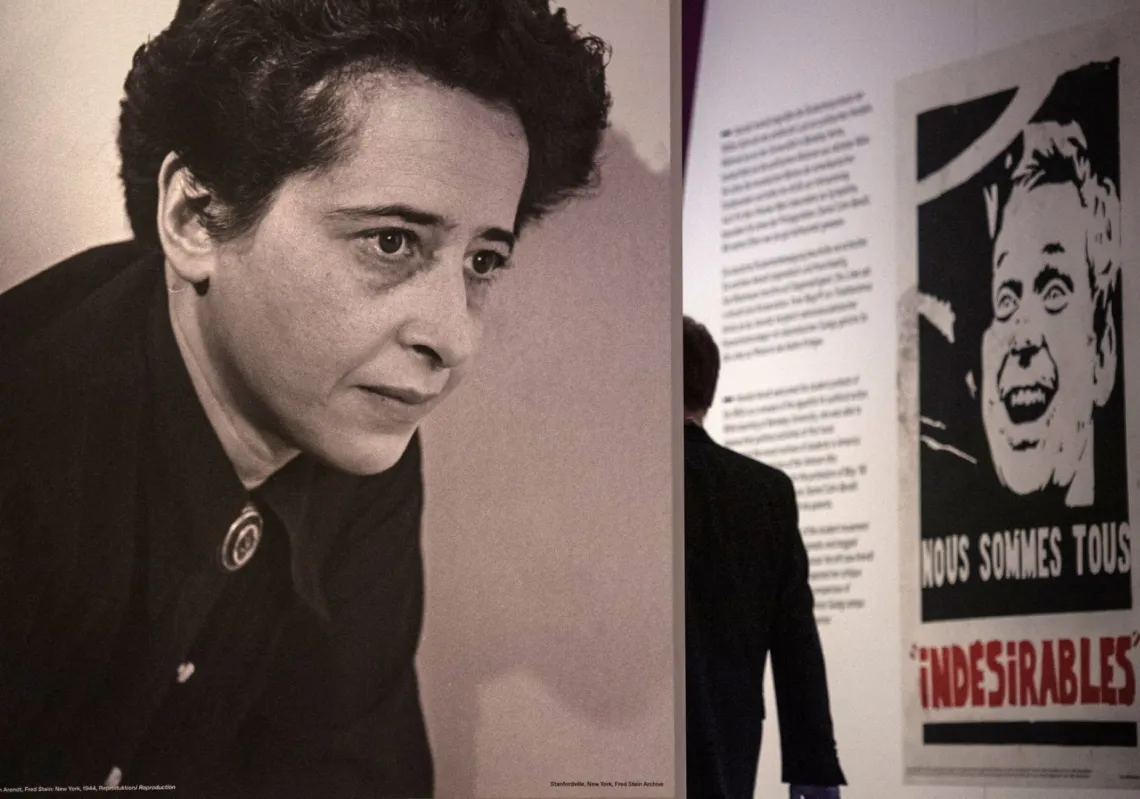 Turkish President Recep Tayyip Erdogan (C) and Azerbaijani President Ilham Aliyev (R) attend the opening ceremony of the first official train service of Baku-Tbilisi-Kars (BTK) railway project in Baku, Azerbaijan on October 30, 2017. (Getty)[/caption]
Turkish President Recep Tayyip Erdogan (C) and Azerbaijani President Ilham Aliyev (R) attend the opening ceremony of the first official train service of Baku-Tbilisi-Kars (BTK) railway project in Baku, Azerbaijan on October 30, 2017. (Getty)[/caption]
by Maia Otarashvili*
At the end of October, the Presidents of Turkey and Azerbaijan, alongside the Prime Ministers of Georgia and Kazakhstan participated in the opening ceremony of the much anticipated Baku-Tbilisi-Kars (BTK) rail line. The 846 km-long rail line is the first of its kind, offering land-connection between Baku, Azerbaijan’s Caspian Sea-coast capital; Tbilisi, Georgia’s capital; and Kars, Tukey’s prominent eastern city. Furthermore, the rail line will serve as a much needed land-bridge between Europe and Asia. It will soon have the capacity of bringing goods from China to the EU within 15 days, and will offer major investment and development opportunities to the region characterized by complex geography and equally as complex geopolitics.
The BTK rail line has been in the works, at least as a concept, since 1993. It became a reality in 2007 when the leaders from Azerbaijan, Georgia, and Turkey signed an agreement in Tbilisi. The BTK rail line’s current capacity includes 1 million passengers and 5 million tons of cargo per year. Back in 2007 as the World Bank and the European Bank for Reconstruction and Development declined to fund the project, so majority of the the costs were covered by the immediate stakeholders - Azerbaijan and Turkey. The international financial organizations preferred rebuilding the old route through Armenia, and were weary that the BTK project could potentially isolate Armenia. Their decision made sense in terms of these organizations’ priorities. Armenia is a landlocked country surrounded by neighbors it has historically seen as enemies; it has long-standing conflicts with Azerbaijan and Turkey. Its only friendly border is with Georgia, a country that has been more fortunate, in terms of its geopolitical location, than Armenia. Georgia's geography isn’t completely convenient either, thanks to its long border with the historically aggressive northern neighbor - Russia. However, Georgia’s Black Sea coastline allows it vital access to Europe and European markets. Through the BTK rail line and other transit routes and pipelines, Georgia is able to serve as a major transit hub between eastern (central and eastern Europe) and western (central and east Asia) parts of the Eurasian supercontinent. For the landlocked Armenia, a rail line like this is of vital importance, but such a project would have resulted in an unrealistic endeavor considering the fact that Armenia’s historically unfavorable relations with Azerbaijan and Turkey continue to this day. Thus, the project has often been criticized because it technically isolates Armenia. But Armenia’s unfortunate geopolitical loss is Georgia’s major gain as it is able to accommodate the 178 km portion of the distance the train needs to go in order to connect Azerbaijan to Turkey. Georgia’s section was funded with low-interest loans from Azerbaijan and cost $435 million.
THE PAN-EURASIAN DREAM
The BTK rail line also subverts Russia as a regional player in terms of inter-regional transit routes and connectivity. Not only does the rail line serve as the most convenient on-land connection between Azerbaijan and Turkey via Georgia, it is also an important missing puzzle piece in the current endeavor of the “pan-Eurasian dream” of the New Silk Road, the “modern interpretation of the ancient trade routes, shipping hubs, and economic corridors that once spanned Europe and Asia.”
As the Georgian Prime Minister explained in his speech during the BTK line opening ceremony, “today the foundation for a new Eurasian bridge is being ensured which will connect both, our economies and our citizens and further better their well-being. Once fully commissioned, the new railway route will foster unlocking our countries' transit and logistics potential and further strengthening the region's transport and trade status.” Indeed, high level government officials from Tajikistan, Turkmenistan, and Uzbekistan were also present at the opening ceremony, demonstrating the broader regional importance of the rail line.
The notion of the New Silk Road also introduces the potential for greater role for China in this equation. One cannot help but notice the growing Chinese presence in the Caucasus. The Chinese state-funded Hualing Group’s larger-than-life construction and real-estate development projects in Georgia, for example, like the Tbilisi Sea New City, make it look like China is there to stay. This particular project includes high-rise towers, a five-star hotel, and a massive shopping center outside Georgia’s capital city of Tbilisi. The Caucasus nations make no secret of their desire to attract even greater Chinese presence there. According to the Georgian PM:
“The success of the Baku-Tbilisi-Kars Railway largely draws on our expanding trade and economic relations with China. We are glad that this route is marked as the Middle Corridor on the China-EU trade and transport map, the term having been coined by President Erdogan in his recent speech at the Silk Road Summit in China. Today, it takes a freight train eight days to deliver goods from China to Georgia via Kazakhstan and Azerbaijan.”
The President of Turkey, Recep Tayyip Erdogan added that by 2034 the rail line’s capacity will increase to 3 million passengers and 17 million tons of cargo per year, tripling its current capacity. This major capacity increase seems to be geared towards China. According to Erdogan “with all our high speed train lines coming into play, cargo from China will soon be able to arrive in European Union countries within 15 days.”
CHINA IS NOT ALL IN
Yet despite the appearances, China is not quite fully committed to the Caucasus. According to Dong Yan, a contributor at the Foreign Policy Research Institute, Chinese interests in the Caucasus are currently more ambivalent compared to its demonstrated investment in Central Asia. In his recent Black Sea Strategy Paper, Yan explained that although Chinese companies are involved in some projects in the Caucasus, they are much smaller in scale compared to its infrastructure and energy works completed in Russia and the five central Asian states of Kazakhstan, Kyrgyzstan, Tajikistan, Turkmenistan, and Uzbekistan. By 2013, trade volume between China and these five countries reached $50 bln. This explains China’s desire to build roads and pipelines to ease its access to the region.
In May 2017, Xi Jinping hailed the Belt and Road Initiative as the “project of the century” and announced that China would be scaling up its investments in the project. Even within the Belt and Road Initiative, however, the role of the Caucasus is not straightforward. Many of the Initiative’s maps show a land transit route going through Iran and entirely avoiding the Caucasus region. The line joins Tehran with Istanbul, crosses the Black Sea to reach Moscow, and then connects with Rotterdam. Georgia and Azerbaijan are strongly advocating for the route to include a Black Sea-Caspian Sea connection. The Georgian government’s new Anaklia Deep Water Port on the Black Sea was geared towards attracting Chinese investments, but after negotiations failed in 2016, its construction and management was awarded to a Georgian-American company. Since then, however, Georgia and China have signed a number of preliminary agreements regarding the establishment of special trade zones and relations, citing their desire to “strengthen the New Silk Road Initiatives.” Moreover, China is involved in another railway project which could connect Iran to Armenia and then to Georgia. But there is also an existing railway project, which was recently launched. The railway line presents an alternative to the BTK route to Chinese-European connection as it completely avoids the Caucasus and transits goods from China all the way to London via Russia. The train took 17 days to get to its destination, crossing 12,000 km. and traveling through eight countries: China, Kazakhstan, Russia, Poland, Germany, Belgium, France, and the UK.
BIG QUESTIONS, FEW ANSWERS SO FAR
In sum, for now it seems that while China takes the Caucasus region very seriously, it wishes to be further courted by Azerbaijan, Georgia, and Turkey. The future of Chinese involvement in the Caucasus will answer many interesting questions: is China transcending Geopolitics by pleasing all and no-one at the same time in the post-communist Eurasia region? Will it take advantage of the BTK rail line yet keep investing in its trans-Russia rail line to reach the EU? Will it continue to be an important business partner to the West, yet work closely with heavily-sanctioned nations, such as Russia and Iran, who are currently nearly isolated from the Western markets? Will the highly nationalistic and sometimes even xenophobic nations of the Caucasus continue to court China for its money (a short-term gains) despite the inevitable consequences of closer relations with China, like increased Chinese migration to the Caucasus and being beholden to China’s wishes (long-term losses)?
The presence of the BTK rail line certainly increases the importance of the Caucasus region in the larger picture of the “Eurasian supercontinent,” partly thanks to China. But while Beijing’s priorities in the Black Sea and Caspian Sea basins remain somewhat noncommittal, the actual intra-regional connectivity in the Caucasus will continue to deepen with or without China’s participation. The BTK rail line is a major advancement towards not only bringing greater modernization to the Caucasus, but also towards attracting other investment opportunities to the region, particularly those from the West.
*Maia Otarashvili is Research Fellow and Program Manager of the Eurasia Program at the Foreign Policy Research Institute in Philadelphia. She holds an MA in Globalization, Development, and Transitions from the University of Westminster in London, UK. Her current research is focused on the post-communist countries of the Eurasia region, including the Black Sea and Caucasus.








